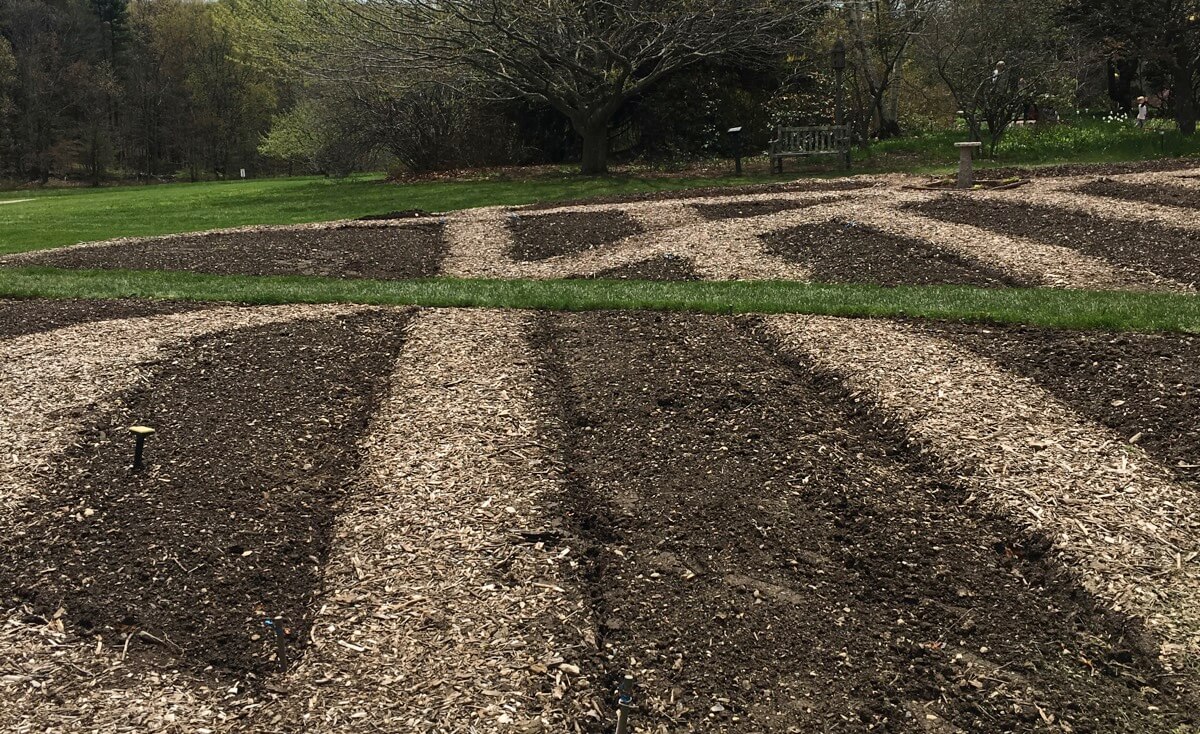It is difficult for soil to be treated with respect. Most people think soil is just dirt. It is actually a miracle that soil exists under our feet. Although it may seem strange at first, soil is actually a living thing. It is full of bacteria (mostly in good ways) and microscopic creatures that allow plants to thrive in many different environments.
But if you take out all the good stuff, all of the organic elements, all the nutrients, and all the moisture that nourish our plants, you will be left with dirt. Finely ground clay and pulverized stones are devoid of the biology that gives soil life and value. Fine Gardeners must be concerned about the soil health of every landscape.
What is soil health? A healthy soil must have good tilth, which is the general condition of soil, including preparation and drainage, sufficient depth for crop growth, sufficient exchangeable nutrients (not excessively or prone to leakage), a small population of weeds, pests and plant pathogens, and a large number of beneficial organisms. It also needs to be resilient to adverse conditions.
Because soil health is a vital part of life, We all need to support soils that are resistant to degradation and can recover quickly from adverse effects such as flooding, droughts, hurricanes and other natural disasters.
Only living things can be categorized as healthy or unhealthy. Soil fits this definition since it is full of living breathing creatures. This helps us understand why soil is important and allows us to make the best decisions to support its work for the planet.
These are the three factors that impact soil health
Fine Gardeners know that soil health is complex. It’s the result of interplay between different materials, conditions, processes, and other factors. Three fundamental factors can have a significant impact on soil health:
- Chemical: This is the process that provides plants with essential macro- and micronutrients. It’s based on soil pH, which must be adjusted for your plants.
- Physical: These are the soil’s dynamic characteristics, such as its structure, composition, drainage abilities, and degree of compaction. This affects roots’ ability to grow and spread.
- Biological: This is the cycle of soil life. Most biological activities and processes occur near the soil’s surface, where all organic material is found.
This gives you an appreciation for something that most people overlook. Healthy soil is our greatest asset and should be treated as well as the plants that we put in it. A lack of understanding is more important than any malice when it comes to what we do with our soil.
Toxification and compaction are two of today’s greatest dangers. Here are some things you can do to protect your soil health.
Testing your soil to find out what minerals are missing or present in your soil. Basic tests usually measure soil pH, magnesium and phosphorus as well as calcium, potassium, and nitrogen. These tests may also indicate the soil’s micronutrient contents, but this is not essential for gardeners who add lots of organic matter to their soil. If you are concerned about lead content in your future vegetable garden, you can test the soil for toxicity.
Type and texture of the soil The soil texture is determined by the amount of clay, silt and sand it contains.
The largest particles are made of sand, which feels very gritty. The silt particles are next in size, which are slippery when they are wet and powdery once dry. Clay is the smallest of all materials. They are flat and stack like sheets of paper or plates. To determine the soil texture, you don’t have to be an expert. You can just pick up a small amount and rub it between your fingertips. It is sandy if the soil feels dry and grity. It is considered silty if the soil feels like talcum powder. The soil that feels hard when dry, and slippery and sticky when it is wet is considered heavy clay. Most soils fall somewhere in the middle.
Because of the small spaces between the sand particles, sandy soils are nutrient-poor. This is because water and nutrients quickly drain through these large spaces. These soils are also low in beneficial microbes, organic matter, and other nutrients that plants need to thrive.
Silty soils don’t drain well because they are dense. They are fertile more than sandy and clay soils.
Clay soils that are heavy in clay tend to be dense and difficult to drain. They also tend not to dry well and can crack when dry. There isn’t much space between clay particles so there isn’t much organic matter. This soil is difficult for plant roots to grow in.
It is possible to cause serious damage to your landscape if the soil is too wet. Even the most healthy soils can be severely damaged by heavy equipment.
Soil needs water and air. Just like all living things. The soil contains atmospheric nitrogen which can be converted to a useful form for plants. The survival of soil organisms that are beneficial to plants is dependent on soil oxygen. Good soil has the right amount of space between its particles in order to retain air that plants can use. The air supply can be balanced by adding organic matter, particularly compost.

